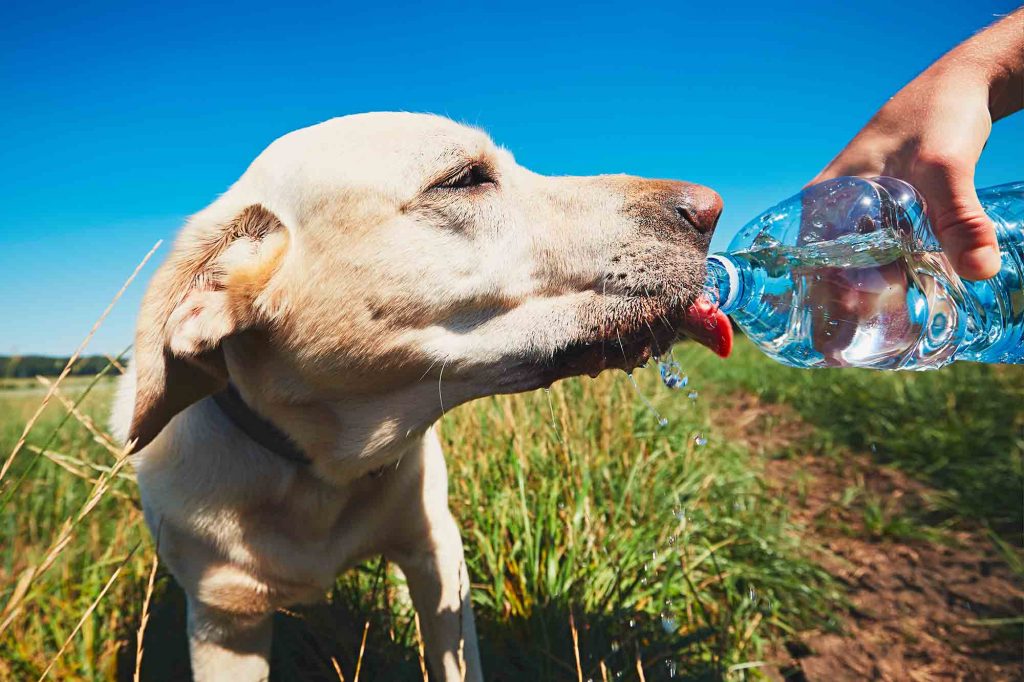Stay Cool! Avoiding Hyperthermia in Pets
 Hyperthermia in pets, also known as heat stroke, is one of the biggest warm weather risks facing pets in the summertime. As temperatures rise, it’s important for pet owners to take their pets’ well-being into consideration. Warm weather doesn’t mean we can’t have some fun in the sun with our pets. Rather, it means that we need to be aware of the risks and plan ahead for their safety and well-being.
Hyperthermia in pets, also known as heat stroke, is one of the biggest warm weather risks facing pets in the summertime. As temperatures rise, it’s important for pet owners to take their pets’ well-being into consideration. Warm weather doesn’t mean we can’t have some fun in the sun with our pets. Rather, it means that we need to be aware of the risks and plan ahead for their safety and well-being.
Hyperthermia in pets, also known as heat stroke, is one of the biggest warm weather risks facing pets in the summertime. Unlike humans, a pet’s only means for cooling their bodies is through oral panting and the small amount of sweat released through their paws. Knowing how to prevent hyperthermia in our pets is the first step toward making sure our furry loved ones stay cool and safe all summer long.
What Is Hyperthermia in Pets?
Hyperthermia is generally defined as a life-threatening elevation in body temperature and most often occurs in hot weather. Values for dogs and cats vary slightly, but anything above 103°F is generally considered abnormal. Once the body temperature approaches 105℉, it can lead to multiple organ failure and death, if left untreated.
Symptoms of hyperthermia/heat stroke in pets include:
- Body temperature exceeds over 103°F (39.4°C)
- Excessive panting/drooling
- Bluish grey or bright red gums
- Thick, sticky saliva
- Loss of coordination
- Weakness
- Vomiting
- Seizures
- Collapse
- Loss of consciousness
If your pet is showing signs of hyperthermia, time is of the essence. Move your pet to a shady/cool environment immediately. Drape wet, cool (never cold, as it could cause your pet to go into shock) towels over your pet’s abdomen, neck, and legs, and give water to drink.
Even if you have begun cooling procedures, your pet will still need to be treated by a veterinarian as soon as possible to ensure that his or her temperature and hydration return to normal. We recommend that you give us a call or bring your pet in to see us immediately. If during our after-hours, you will need to take your pet to the nearest animal ER for care.
Keeping Them Cool
Leaving a pet inside a parked vehicle is the number one cause of heat-related death in pets. It only takes a mildly warm day and a few minutes for temperatures inside a parked car to skyrocket to dangerous levels, even if the car is parked in the shade and the windows are cracked open. NEVER leave your pet in your parked vehicle during the summer months.
The absolute best way to protect your pet against hyperthermia is to keep it at home.
Other important ways you can keep your pet from overheating this summer include:
- Making sure he or she has access to cool, fresh drinking water at all times
- Limiting outdoor physical activities to early morning and evening hours
- Keeping your pet indoors during the warmest part of the day with the air conditioning or fans on to keep the air circulating
- Providing a consistently shaded place for your pet when outdoors
- Brushing your pet regularly to remove excess fur and to increase airflow to the skin
Other Risk Factors
Due to their restricted airways, brachycephalic (flat-nosed) breeds, such as pugs, bulldogs, boxers, as well as Persian cats, are at an increased risk for developing hyperthermia. Older, very young, or obese pets should also be carefully monitored for overheating during the warmer months. Their bodies aren’t as efficient at dealing with hot temperatures. Extra care should be taken with dogs having heavy or thick hair, such as Huskies, Malamutes and Samoyeds, and any thick-haired cat, as they, too, are at greater risk for becoming hyperthermic.
The Dog Days of Summer
Do take the time to have some good old-fashioned fun cooling off with your pet! Setting up the sprinkler or wading pool for your dog (and yourself) to splash in is a great way to stay cool, while still having some enjoyable outdoor playtime with your best pal.
If you have any questions about hyperthermia in pets, please don’t hesitate to contact the staff at Lone Tree Veterinary Medical Center.

